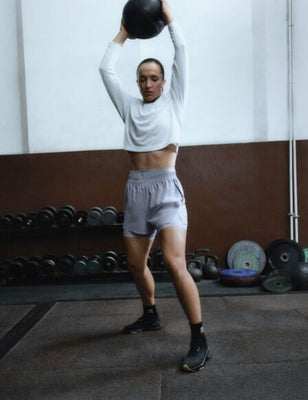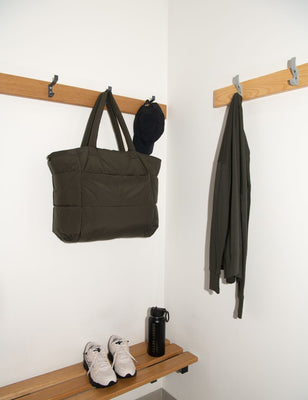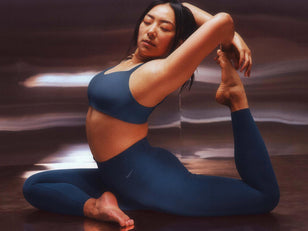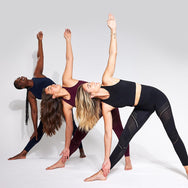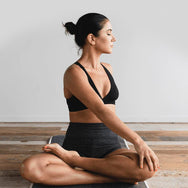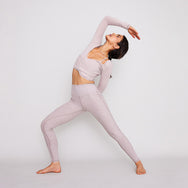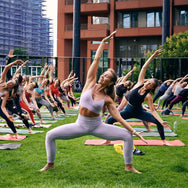Words by Chris Magee

When you think of a physical strength building practice, yoga probably isn’t the first thing that springs to mind.
Depending on the balance of your training people often supplement yoga into their routine to act as recovery days, or as an opportunity to stretch and release following more intense sessions in other disciplines.
However there is a lot of strength to be gained from your yoga practice if you approach it in the right way. Achieving a good level of strength within our practice is essential to stay balanced, and avoid injury.
HOW CAN YOGA PRACTICE BUILD STRENGTH?
My teaching style and practicing style has evolved over the years to a place where the yoga asana provides an opportunity to become stronger and more supple, giving me a much greater range of motion with my body, but also a greater amount of control throughout that entire range. This combination for me was essential as it provides the greatest longevity for being able to practice every day without burnout. It has helped me bulletproof my body to avoid injury, and has opened up the opportunity to explore more difficult asana.
If this sounds like something you would like to practice, getting to a vinyasa class will best serve your purpose. That could be “Power”, “Ashtanga”, “Rocket”, or anything with a dynamic description on your studio timetable. In the meantime, grab your mat, and try some of my favourite drills at home!

DRILL 1: GET ON YOUR SHOULDERS
Our bodies are notoriously weak in our end ranges of motion. Learning to fully protract (dome your back) is an excellent strength builder for all straight arm strength movements that you have in your practice - such as a handstand.
Start in a regular plank, keeping your arms straight throughout, actively squeeze your shoulder blades together. Then push up, doming the back as high as you can. Stay connected to your breath and try to not let your hips rise. Try this for 5-10 repetitions to start.

DRILL 2: CHATURANGA, THE YOGI PUSH UP
Strength is in stillness and in movement. It’s the art of the transitions.
The Chaturanga is a fantastic way to build bent arm strength in your practice. However, traditionally, the yogi push-up has often missed the UP bit, which leaves room for people to collapse through the movement instead of building strength. It is important that we build strength in every variety within the transition through controlling the lowering phase (eccentric), actively maintaining the 90 degree hold (isometric), and bring ourselves back to plank (concentric).
It is absolutely fine to use your knees in this movement, especially whilst we build our strength up. The aim being to repeat the action repetitiously and mindfully, an exhale lowers us down and an inhale brings us up. Start with 3 slow controlled repetitions and add from there as you may need.

DRILL 3: DUAL PURPOSE POSES, ACTIVE PIGEON
Pigeon is a fantastic pose for opening up the hips and the glutes, but is also an amazing pose for strengthening those areas (as well as the lower back) if done in a certain way. Try keeping the back toes tucked and the back knee lifted off the ground so your leg is engaged. The hips will remain floating in the air, and your torso will be as upright as possible.
We want to have little to no weight in our arms, this might mean fingertips gently resting on the floor or blocks to help a little with our balance (but definitely not to push into the ground for strength), or ideally our hands are lifted away from the ground. Let your exhale fold you forward over the front shin (hovering in the air), and let your inhale raise you back up to start.
Start where you can with these in terms of repetitions, aim to build towards 10.

DRILL 4: TAKE FLIGHT
Aim to build up your stamina and muscular endurance by lengthening the amount of time you hold a pose, working specifically with your arm balances and inversions.These poses require skill/understanding as well as a base level of strength before they will be accessible, so don’t worry if this one isn’t for you yet.
If you have some of these poses available to you, enter the pose and start to hold strong with good form. Rather than setting a timer to track your stamina, I prefer to count a controlled steady breath as it brings me back to the yoga in the movement. Start with trying to maintain the pose for 5 breaths and build up from there.
CONCLUSION
Strength training is hard work, no matter what discipline it comes in, so make sure you give yourself enough rest and recovery in between sessions, and try to have fun with it. Your yoga practice, as well as your strength gain within it, is a journey. Honour your body by not being too forceful. Trust the process.
Remember no single discipline is perfect. If we want to be truly balanced, strong and healthy, it’s important to mix things up with your training. Add these drills into your next session and see how it feels in your body.







